Mark Anthony Neal's Blog, page 860
October 22, 2013
Totally Biased: W. Kamau Bell Talks Homophobia and Hip-Hop with Jay Smooth
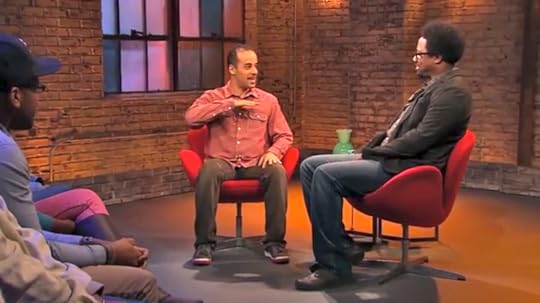 Totally Biased with W. Kamau BellKamau interviews hip hop blogger and radio host Jay smooth! Jay defends Kanye, talks homophobia in hip hop and has some friendly advice for Chris Brown.
Totally Biased with W. Kamau BellKamau interviews hip hop blogger and radio host Jay smooth! Jay defends Kanye, talks homophobia in hip hop and has some friendly advice for Chris Brown.
Published on October 22, 2013 15:12
Left of Black @ Harvard: S.T.E.M. Education, Black Unemployment & Science Genius with Christopher Emdin
 Left of Black S4:E6
Left of Black S4:E6
Left of Black @ Harvard: S.T.E.M. Education, Black Unemployment & Science Genius with Christopher Emdin
On location at the HipHop Archive and Research Institute at the Hutchins Center for African and African American Research in Cambridge, MA, Left of Black host and Duke University Professor Mark Anthony Neal sits down with Christopher Emdin, Associate Professor in the Department of Mathematics, Science and Technology at Teachers College, Columbia University.
Emdin, the author of Urban Science Education for the Hip-hop Generation , is Director of Science Education at the Center for Health Equity and Urban Science Education and currently a Caperton Fellow and Hip-Hop Archive Fellow at the HipHop Archive and Research Institute. With the hip-hop artist The GZA, Emdin is also co-founder of Science Genius .Left of Black is a weekly Webcast hosted by Mark Anthony Neal and produced in collaboration with the John Hope Franklin Center at Duke University.
***
Episodes of Left of Black are also available for free download in @ iTunes U
***
Follow Left of Black on Twitter: @LeftofBlackFollow Mark Anthony Neal on Twitter: @NewBlackMan Follow Christopher Emdin on Twitter: @ChrisEmdin
Published on October 22, 2013 14:44
Gentrification Rocks North Carolina’s Historic Black Community: Old Hayti & Black Wall Street
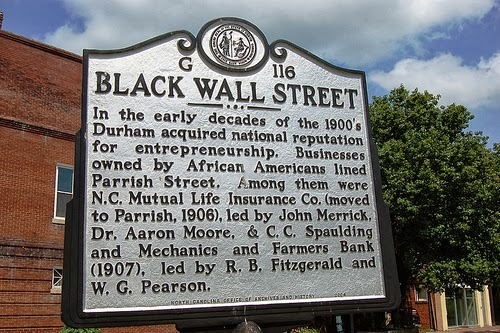 Ever since the New York Times highlighted Durham as one of the best new cities to live in the South, gentrification has been steadily creeping
Ever since the New York Times highlighted Durham as one of the best new cities to live in the South, gentrification has been steadily creeping
Gentrification Rocks North Carolina’s Historic Black Community: Old Hayti & Black Wall Street by Lamont Lilly | special NewBlackMan (in Exile)
Several years ago, the city of Durham, NC announced that it had developed a ten-year program to eradicate local homelessness. Several years ago, city officials stated that additional housing for the poor and underprivileged was one of the city’s most sincere concerns. Unfortunately, it doesn’t look like city officials have made due on their promises.
Instead, low income residents are being pushed out of their homes all over the city, especially in the communities surrounding Durham’s burgeoning downtown district. In the same manner the Durham Freeway was constructed through Durham’s historic Black community, eminent domain is once again uprooting mostly poor Black residents. Profit motives are replacing history and people with upscale restaurants and designer strip malls.
 The communities of Southside and East Durham have already fallen victim to gentrification efforts. The district that Booker T. Washington and W.E.B. DuBois once praised, Old Hayti, is without a doubt, going to be next. Old Hayti was home base to North Carolina’s Black Wall Street. Knowing the history of Durham’s underground development plans, it’s probably already on the city’s gentrification radar.
The communities of Southside and East Durham have already fallen victim to gentrification efforts. The district that Booker T. Washington and W.E.B. DuBois once praised, Old Hayti, is without a doubt, going to be next. Old Hayti was home base to North Carolina’s Black Wall Street. Knowing the history of Durham’s underground development plans, it’s probably already on the city’s gentrification radar.Gentrification is the process of replacing low income distressed communities with new commercial and residential districts that cater to the middle and upper class. Communities targeted for such systematic face lifts are typically poor, Black and Latino. The popular claim is that corporations and city officials are reinvesting money back into the community, and that’s great, but dismantling low income neighborhoods is not the way to do it. Replacing families who depend on community ties to survive with coffee shops, specialty beer bars and dessert parlors, borders on complete inhumanity. Such decisions regarding the infrastructure of people stand as testaments to the disregard of human life.
Last year, Lincoln Heights public housing residents were all of sudden given 30 days to vacate their homes, with no financial resources or place to go. While some sought refuge in homeless shelters and provisional housing, others beckoned the assistance of close friends and family members. Community based programs like Urban Hope offered modest assistance, but strict guidelines limited efforts of available aid.
Lincoln Heights is a subdivision within McDougald Terrace, a 25-acre public housing community located in southeastern Old Hayti. It sits conveniently between North Carolina Central University and Durham Technical Community College. Ever since the Durham Housing Authority’s ‘Transformational Plan’ was introduced in 1989, several speculators have had their eye on McDougald Terrace. As a matter of fact, the McDougald Terrace Branch Library was quietly closed by the city September 30th 2013. Once grades decline and crime increases among neighborhood youth, city officials will have a reason to ship tenants out next.
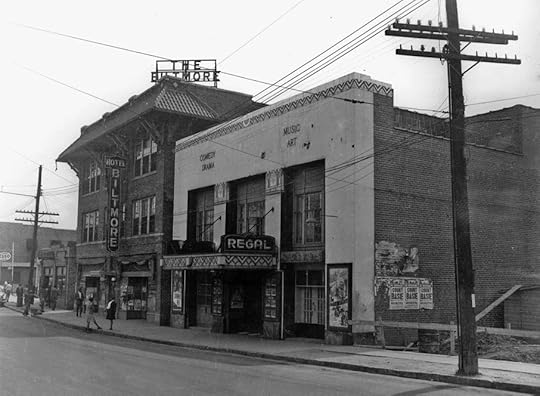 In Old North Durham, the El Kilombo community center fought like hell to resist privatization. They were screaming “GENTRIFICATION” three years ago over the Old North Durham Park. Truth is, the children they were tutoring Monday thru Thursday, and the families they were feeding for free on Fridays, were bought out for yoga studios and entertainment halls. When human beings and their social bonds are replaced by glass buildings and profit-driven businesses, the issue isn’t “renewal.” The question is what’s more important, people or property?
In Old North Durham, the El Kilombo community center fought like hell to resist privatization. They were screaming “GENTRIFICATION” three years ago over the Old North Durham Park. Truth is, the children they were tutoring Monday thru Thursday, and the families they were feeding for free on Fridays, were bought out for yoga studios and entertainment halls. When human beings and their social bonds are replaced by glass buildings and profit-driven businesses, the issue isn’t “renewal.” The question is what’s more important, people or property? For those of us who have observed Durham’s surge of urban renewal at the grassroots level, it’s obvious that vast amounts of poor Black and Latino communities are catching a raw deal. At first their neighborhoods are sold off to the highest bidding real estate speculator. Then they’re gutted, bulldozed and cleared away for new condos the working poor cannot afford to live in. While city officials zealously claim to care about fair housing, fair housing seems to be avoiding those who need it most.
What troubles me is such processes of systematic displacement are occurring all throughout urban America. Durham, North Carolina is not the only city being pinched by gentrification. Harlem, Brooklyn, Detroit, Washington DC and Philadelphia have all served as recent grounds of gradual displacement of the working poor. The same people who used to catch the first boarding pass of “white flight,” are now returning for close proximity to gourmet waffles, cupcake shops and cappuccinos.
Tossing the underprivileged out like last night’s trash is not only sickening, it’s inhumane. Does anyone care about the poor anymore? Does anyone besides me see what the hell is going on here? Somebody…anybody…say something!
***
Lamont Lilly is a contributing editor with the Triangle Free Press, Human Rights Delegate with Witness for Peace and organizer with Workers World Party. Follow his commentary on Twitter
Published on October 22, 2013 04:09
October 21, 2013
'Church was Family, but also a Place of Fear': Jermaine Lee for the Many Voices Video Campaign
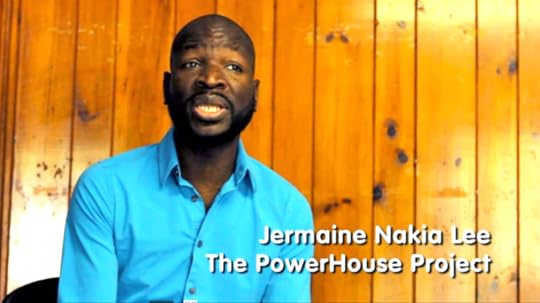 Many Voices
Many VoicesThe Many Voices Video Campaign Illuminates the powerful presence of Black Gay and Transgender Christians within The Church.This edition features Jermaine Lee, Program Manager of Behavioral Intervention at the PowerHouse Project in Charlotte, North Carolina. The PowerHouse Project is a drop-in center for Black & Latino gay/bisexual men or MSM's [men who have sex with men].Created by Katina Parker for Many Voices. vimeo.com/katinaparkerMusic by Laila Nur. whoislailanur.com
Published on October 21, 2013 15:50
October 20, 2013
Season Finale -- For Colored Boys, REDEMPTION | 'I'm Here to See You' Ep. 8 of 8 (dir. Stacey Muhammad)
 WildSeed Films
WildSeed FilmsSeason 1, Episode 8 of 8 For Colored Boys, REDEMPTION.
A soul-stirring dramatic series about a father's attempt to repair his broken family after being released from prison, starring Rob Morgan and Julito McCullum with Tim Reid and Jacinto Taras Riddick.
with Lauren Hooper, Nashawn Kearse, Kai Muhammad, Jas Anderson, Ryan Stephenson, and Brittany Chance.
Created, Written and Directed by Stacey Muhammad for Wildseed Films
Executive Produced by Isaiah Washington
Executive Produced by Marc Lamont Hill
Produced by Michael Boogie Pinckney (Black Noise Media)
Produced by Lisa Cynical Smith (Bucktown USA) and The NY Frequency.
Starring: Rob Morgan and Julito McCullum with Tim Reid and Jacinto Taras Riddick
Cast: Lauren Hooper, Nashawn Kearse, Jas Anderson, Lamar K. Cheston, Ephriam Fetti Benton, Brittany Chance, Kai Muhammad, Tekomin Wiliams, Brandhyze Stanley, Ryan Stephenson, Krystal Farris.
Guest appearances by Stephen Hill, Corey Roberts and Prince Po.
Director of Photography: J Anders Urmacher
Edited by: Max Papadop
Casting Director: Tiandra Gayle
Art Direction: Phillip Shung
Music Director: General Steele of Bucktown, USA
Unit Production Manager: Oveta Clinton
Wardrobe Supervisor: Danielle Miller
Hair and Makeup: Jewel Whinfield
www.forcoloredboysseries.com
Shot on RED, SAG AFTRA, MADE IN NY
Published on October 20, 2013 18:28
More at Stake than Football in Grambling State Boycott
 More at Stake than Football in Grambling State Boycott
by David J. Leonard | NewBlackMan (in Exile)
More at Stake than Football in Grambling State Boycott
by David J. Leonard | NewBlackMan (in Exile)This week student-athletes at Grambling State University said enough is enough: refusing to practice and play their scheduled game against Jackson State University, during what was JSU’s Homecoming Weekend. Grambling Sate’s unified group stood up to denounce the lack of voice afforded them, the working conditions under which they practice, and the dangers associated with playing collegiate football at Grambling State University.
Yet, two narratives have emerged in response to the player boycott: that of entitled athletes and the dysfunction of Grambling State University. Deploying longstanding racial stereotypes, anchored by dominant white racial framing, and a narrative that inherently pathologizes and demonizes black bodies, the media discourse has conveniently erased the root issues. Look no further than the comments section, which consistently reflects the “shut up and play” reframe, noting that the student-athletes should be content with “whatever” since without football they would not even be on campus.
At one level, the dismissal of the players’ concerns and their boycott reflects a lack of understanding of collegiate sports. They are protesting their labor conditions, which include: having to purchase Gatorade themselves; being forced to hydrate from a hose under the stadium; 14 & 17 hour bus rides—making being a student and an athlete difficult, if not possible; and team facilities and player equipment covered in mold and mildew. According to a letter from the players, “The uniforms are poorly cleaned and contribute to the multiple cases (of) staph infection. Several players have been infected with staph multiple times.”
Despite media coverage that has for the most part glossed over the specifics, and a surface narrative that instead plays upon that of spoiled (black) student-athletes, the protest is about abysmal work conditions; it is about health and safety. Coverage that frames the story around entitled (black) student-athletes, who don’t deserve to be on a college campus except for football, contributes to a lack of national concern that ignores the broader issues at work.
On another level, the media discourse has focused on “in-fighting” and the “failures” of the administration. Seemingly reducing the issue to “black-on-black” conflict and the incompetence of HBCUs, the national media has erased the systemic contexts in which HBCUs function. Rather the conflict is symptomatic of the divestment fromand privatization of education—it’s bigger than Grambling State University.
The state of Grambling football is a window into the larger neglect of higher education in Louisiana as well as the precarious situation facing many HBCUs. The situation at Grambling has everything to do with the decisions of Governor Bobby Jindal and a GOP-led state legislature.
In 2009, Governor Jindal turned down federal stimulus money all while cutting 219 million dollars from the already strapped state higher education budget—just like that Grambling had lost 5 million dollars. Fast forward to 2013, and state resources provided to Grambling are down 50% since 2007. It is no wonder that its libraries, classrooms, and athletic facilities are falling apart; it is no wonder that the work conditions of its faculty and student-athletes are abysmal.
The situation at Grambling also reflects the privatization of college sports. “Today’s contest is brought to you by ESPN, TV deals, NIKE…”—Schools with access to television dollars are able to compete while those without that access are reliant on state funds. It is a living example of neoliberalism and the dangers and despair resulting from the systemic divestment from public institutions.
If the football team is in shambles, we can only imagine the state of classrooms, the infrastructure on campus, and the treatment of university workers on the Grambling campus. What is happening with the football team is a window into, not only the broader struggles at Grambling State University***
David J. Leonard is Associate Professor in the Department of Critical Culture, Gender and Race Studies at Washington State University, Pullman. Leonard’s latest books include After Artest: Race and the Assault on Blackness (SUNY Press) and African Americans on Television: Race-ing for Ratings (Praeger Press) co-edited with Lisa Guerrero. He is currently working on a book Presumed Innocence: White Mass Shooters in the Era of Trayvon about gun violence in America.
Published on October 20, 2013 17:03
Farm to Table Family: Harvest Pumpkin Soup
 Farm to Table Family | PBS Parents
Farm to Table Family | PBS ParentsPumpkin Soup. Can't get more fall than a pumpkin soup! Baked in a pumpkin! Ever since we received the book "Pumpkin Soup" in our preschool book club, I've been wanting to make this perfect fall soup for the kids. We went to a real pumpkin patch to pick out the Cinderella pumpkin for the soup and the boys got to see how pumpkins grow. One of my dear friends, Shianling, introduced me to this recipe from Deborah Madison and it's definitely a keeper. It's tasty, simple, pumpkiny, and perfect for the holidays coming up!
HARVEST PUMPKIN SOUP RECIPE
Ingredients
1 Cinderella Pumpkin
1 quart of fresh chicken or vegetable broth
1 quart of whole milk, heavy cream, or a mix
15 sage leaves
Sea Salt
Fresh pepper
3-5 garlic cloves sliced
1-2 handfuls Gruyere Cheese
Italian flat leaf parsley
1. Cut a lid off the top of the pumpkin
2. Scoop out seeds and stringy fibers
3. Rub a little sea salt inside
4. Heat 1 quart of fresh chicken or vegetable broth
5. Add 1 quart of whole milk
6. Add sliced garlic and sage
7. Add fresh pepper
8. Once boiling, pour the hot liquid into the pumpkin
9. Bake in the oven at 375F for 2 hrs or until the pumpkin feels soft
10. Pumpkin chaos in the kitchen!
11. Carefully, scoop the flesh into the soup
12. Optional: Depending on the pumpkin, if the flesh is stringy, pour the liquid and pumpkin flesh out and puree it instead. Then put it back into the pumpkin. Or if pumpkin has caved in, forget the pumpkin and use a traditional serving bowl instead.
13. Stir in lots of gruyere cheese, sprinkle flat leaf italian parsley, and add some salt to taste.
Published on October 20, 2013 02:53
Super-Sizing Welfare Costs: Low Wages at McDonald's, Burger King Cost Taxpayers Billions
 Democracy Now
Democracy NowNew research shows more than half of low-wage workers at fast-food restaurants rely on public assistance to survive -- a rate double that of the overall workforce. According to researchers at the University of California, Berkeley, low wages in the fast-food industry cost American taxpayers nearly $7 billion every year -- that's more than the entire annual budget of the Centers for Disease Control and Prevention. A companion report by the National Employment Law Project found McDonald's alone costs Americans $1.2 billion annually by paying its workers insufficient wages. Last year the top 10 largest fast-food companies alone made more than $7.4 billion in profits.
Published on October 20, 2013 02:44
October 17, 2013
TimesTalks: The Legendary James Earl Jones Discusses His Career
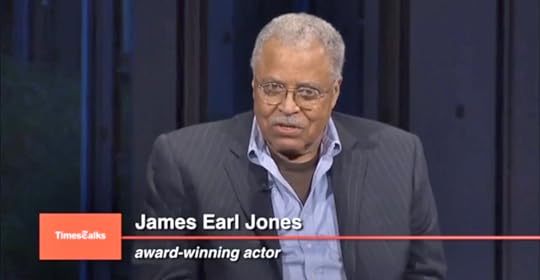 TimesTalks
TimesTalksJames Earl Jones talks with New York Times theater reporter Patrick Healy. James Earl Jones, the award-winning actor, discusses his work in theater, film and television.
Published on October 17, 2013 14:17
Essence Talks with the Cast and Director of '12 Years a Slave'
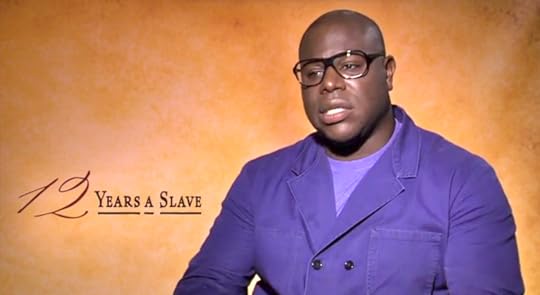 Essence Magazine
Essence MagazineAlfre Woodard, Lupita Nyong'o, Chiwetel Ejiofor and the cast of '12 Years a Slave' on their experience working with director Steve McQueen
Published on October 17, 2013 14:04
Mark Anthony Neal's Blog
- Mark Anthony Neal's profile
- 30 followers
Mark Anthony Neal isn't a Goodreads Author
(yet),
but they
do have a blog,
so here are some recent posts imported from
their feed.



